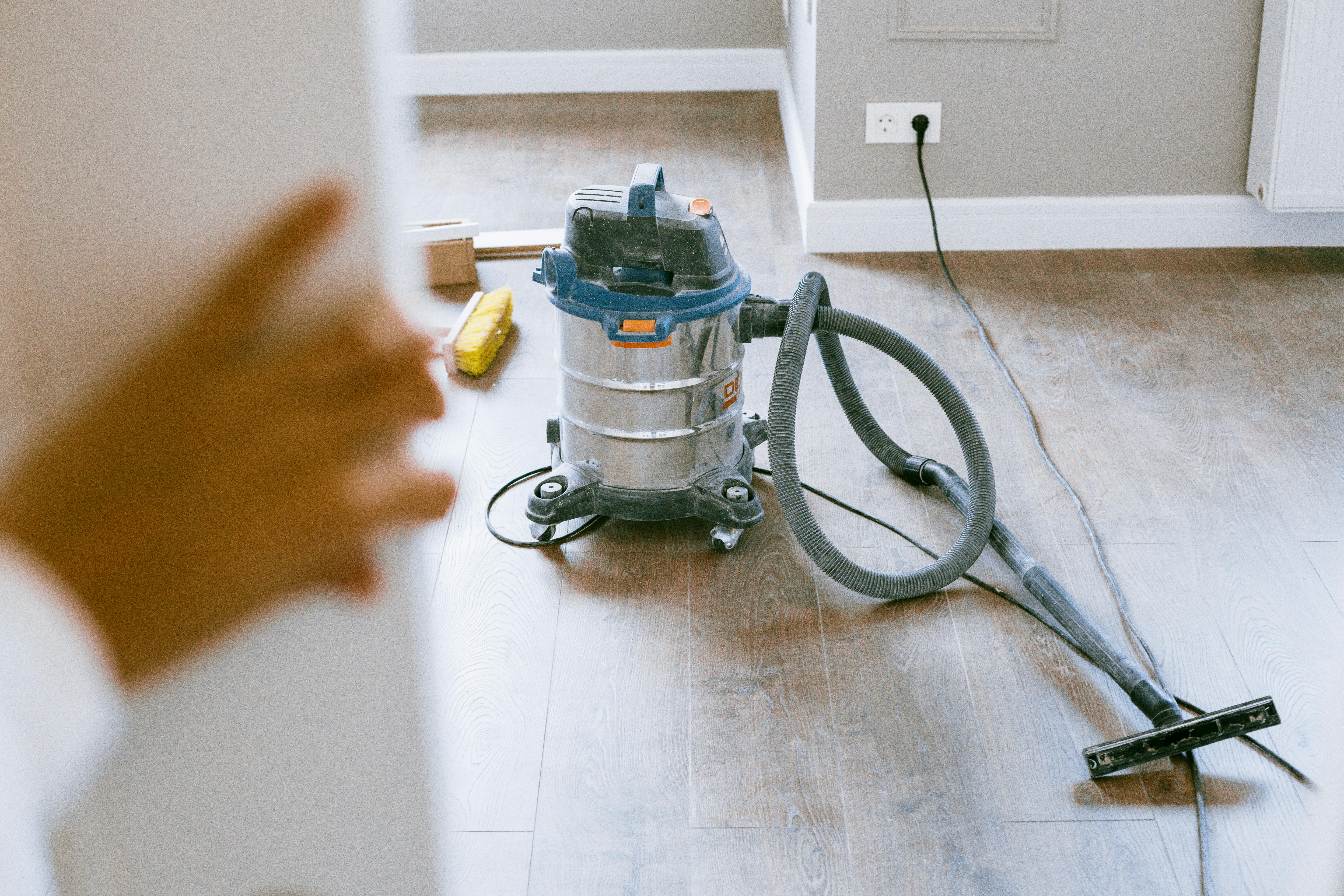Vacuum distillation is a process used to separate components of a liquid mixture based on their boiling points. This technique is used when one component of the mixture has a much higher boiling point than the other components, and it helps to ensure that the higher boiling point component does not degrade due to excessive heat or pressure. Vacuum distillation can be used to purify liquids, separate mixtures, and even concentrate volatile compounds. In this article, we will discuss the basics of vacuum distillation and how it works.Vacuum distillation is a process used to separate liquids which have different boiling points. This is done by lowering the pressure of the liquid mixture, which lowers the boiling point of the components and allows them to be separated. The vapor produced from the liquid mixture is then directed into a condenser where it is cooled and condensed back into a liquid form.
Vacuum Distillation
Vacuum distillation is an important process used in the laboratory for the purification of liquids and is especially useful for compounds that cannot be distilled under atmospheric pressure. Vacuum distillation requires specialized equipment and techniques, but can be an invaluable tool for chemists. In order to effectively use a vacuum distiller, there are several pieces of essential equipment that must be acquired.
The first step in setting up a vacuum distiller is to acquire a high-quality vacuum pump. Vacuum pumps are used to create a reduced pressure environment within the distillation chamber, allowing for the separation of liquids at lower temperatures than what would be achieved under atmospheric conditions. It is important to select a pump with an adequate capacity for the desired level of vacuum, as well as one that will provide reliable performance over time.
In addition to a vacuum pump, a heating source must also be obtained in order to heat the liquid mixture and allow for efficient distillation. Vacuum stills typically use either an electric heating mantle or an oil bath as their primary heating source. The heating source should have sufficient power and adjust
How To Perform a Simple Vacuum Distillation
Vacuum distillation is a process of distilling liquids at a temperature well below their normal boiling point by reducing the pressure surrounding them. This method of distillation is commonly used when the boiling points of the desired components are close together, and it produces higher-purity products than simple distillation. Vacuum distillation is also advantageous in that it can be performed at temperatures lower than the normal boiling point, which helps to avoid decomposition reactions and maintain product quality. Here we will discuss how to perform a simple vacuum distillation.
The first step in performing a vacuum distillation is to prepare the apparatus. This includes setting up a round-bottom flask with a condenser attached, an aspirator pump or other vacuum source, and an appropriate collection vessel. Once the apparatus has been set up, it should be evacuated to create the vacuum needed for the process. This can be done using an aspirator pump or other vacuum source, such as a water aspirator or diaphragm pump.
The next step is to place the liquid material to be distilled into the round
What Are the Benefits of Vacuum Distillation?
Vacuum distillation is a process that uses vacuum pressure to reduce the boiling point of a liquid, allowing it to be distilled at lower temperatures. This process is beneficial for separating mixtures of liquids with different boiling points and for purifying compounds that decompose at higher temperatures. Vacuum distillation also reduces the amount of energy and time needed to complete the distillation process, making it an efficient method for producing pure compounds.
One major benefit of vacuum distillation is the ability to purify liquids rapidly and efficiently. This is due to the lower boiling point used in this process, which allows for faster separation of components in a mixture. In addition, vacuum distillation prevents any thermal decomposition of compounds that may occur at higher temperatures, ensuring a higher purity product.
Another advantage of vacuum distillation is that it is a relatively safe process compared to other methods such as fractional distillation. Vacuum distillations use low temperatures and pressures, which make them less hazardous than other processes that involve higher temperatures and pressures. As a result, vacuum distillations
Types of Vacuum Distillations
Vacuum distillation is a method of distillation which uses a vacuum to lower the pressure on the liquid being distilled. This reduces the boiling point of the liquid, allowing it to be distilled at a much lower temperature than is possible with traditional distillation techniques. Vacuum distillation is commonly used in the production of essential oils, perfumes, and other volatile compounds. There are several different types of vacuum distillation that can be used depending on the type of material being distilled and the desired end result.
The most common type of vacuum distillation is simple or short-path distillation, which involves passing a vaporized liquid through a tube or condenser. This allows for efficient separation of components due to reduced pressure and low temperatures. Flash vacuum distillation is another type of vacuum distillation which uses a combination of high-pressure steam and low-pressure steam to achieve separation. It is typically used when more precise control over the process is needed, such as when volatile compounds are present in the mixture being distilled.
Fractional vacuum distillation is another common method that uses a series of fractionating columns to achieve separation between

How To Choose the Right Type of Vacuum Distillations?
When it comes to vacuum distillations, there are several different types to choose from. The type of vacuum distillation you select will depend on the specific application and what you are attempting to achieve. Vacuum distillation is used for many purposes, including purifying substances, separating mixtures, and producing essential oils. Each type of vacuum distillation has its own unique advantages and disadvantages that must be considered before selecting the right type for a particular application.
One of the most widely used types of vacuum distillation is short-path distillation. Short-path distillation is highly effective for separating complex mixtures or compounds with similar boiling points. It is also relatively easy to operate, making it ideal for laboratory use. Short-path systems can also be scaled up for larger production runs.
Another type of vacuum distillation is wiped-film evaporator (WFE) technology, which is well suited for purifying high-boiling point liquids and viscous materials. WFE systems are capable of achieving extremely high levels of purity in a relatively short amount of time. They can also handle a
Safety Precautions during Vacuum Distillation
Vacuum distillation is an important laboratory technique used to purify and separate volatile compounds. It is essential to take proper safety precautions when performing vacuum distillation, in order to ensure the safe handling of both the apparatus as well as the chemicals being used.
Before starting any experiment, it is important to be sure that all of the proper safety equipment is available. This includes protective eyewear, gloves, a lab coat, and a fume hood. It is also important to be sure that all safety protocols are followed throughout the experiment.
It is also essential to ensure that all components of the vacuum distillation apparatus are properly connected and sealed in order to prevent any leaks or spills from occurring during the distillation process. Additionally, it is important to regularly check for any signs of wear or damage throughout the experiment.
The use of a hotplate stirrer can also be beneficial for controlling temperatures during vacuum distillation; however, it is important to be aware of potential fire hazards associated with this type of equipment. Therefore, special care should be taken when using a hotplate stirrer and appropriate fire extinguishing
Cleaning Your Vacuum Distillation Equipment
It is important to regularly clean your vacuum distillation equipment to ensure optimal performance. Vacuum distillation equipment should be cleaned after every use and it is recommended that a more thorough cleaning be done at least once a month. It is important to clean all of the parts of the vacuum distillation equipment, including the condenser, the collection flask, the vacuum hose and any other components. All of these parts should be cleaned with a non-abrasive cleaner or soap and water solution. After cleaning, it is important to rinse off all of the parts with hot water and let them dry completely before reconnecting them.
Maintaining Your Vacuum Distillation Equipment
In addition to cleaning your vacuum distillation equipment regularly, it is also important to maintain it properly. This includes making sure all of the connections are secure and free from leaks or cracks. It is also important to check for any signs of wear or corrosion on any of the components. If any damage or wear is noticed, it should be repaired or replaced immediately in order to prevent any further damage. Additionally, it is

Conclusion
Vacuum distillation is a powerful tool for separating liquids that have a wide boiling point range and cannot be effectively distilled under normal atmospheric conditions. By reducing the pressure, the boiling points of the liquids are lowered, allowing them to be more easily separated. It is important to note that vacuum distillation requires specialized equipment and should only be done with the proper safety equipment and precautions.
Vacuum distillation can be used in a variety of applications, from laboratory use to industrial processes. By understanding how it works and its benefits, you can make an informed decision on when and where this technique can be utilized.
Overall, vacuum distillation is an effective way to separate liquids that would otherwise require extreme temperatures or pressures to separate. When used properly, it can provide highly efficient separations with minimal energy input.
With its ability to lower boiling points while preserving the integrity of volatile components, vacuum distillation is an essential tool for many industries today.

